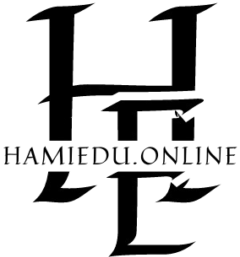The trade cycle, or more usually, the business cycle mentions to the changes in the level of financial activities in a specific area over the years. These changes follow an growth stage where most economic pointers are on the rise such as GDP, employment, and consumer expenditure and are later followed with a reduction stage. It is important for policymakers, business people or anyone in the society for that substance to understand the trade cycle, as it contributions in knowing what actions to take and when to make them.

Different stages of the trade cycle.
The trade cycle includes of the following four phases: growth, peak, reduction and manger. We will reproduce in turn the features of the development of the economy that belong to each of these phases 1) Expansion 2) Peak 3) Contraction and 4) Trough.
1. Expansion. Economic activities rise, the GDP grows and employment rates also tend to recover. During this stage, initiatives implement new investment schemes, the level of economic beliefs increases and the consumers’ expenditure also increases. Meanwhile the demand for goods and services increases, it is likely that there will be more workers borrowed and production elevated. Most economists however note that the growth phase may take numerous months or years due to a number of issues such as low interest rates, hopefulness among consumers and high amounts of influence.
2. Peak. The peak phase happens when the economic activity spreads its maximum level before it starts to decline. At this stage, development may start to slow since the factors of production become limited which causes values to increase which leads to rise. At this point in the business cycle, a number of trades may be earning profits, yet, there are early pointers of an extreme economy, like demands for higher wages and growth in the production scale prices. As in the continuance of the phrase the peak is followed by vicissitudes in expectation of consumers and businesses due to clear concerns about sustainability of such high level financial activity.
3. Contraction. These can also be called as despairs, during this stage of the business, there is a decrease in economic activity. Throughout this period, GDP reductions, widespread unemployment upsurges, and the propensities for the consumers to spend money Showtime concerns over TV shows reductions as for businesses its retro of active investments. Such a marvel widens the gap and creates a vicious cycle in himself as more employees are laid off and manufacture reduces. This phase may be caused by a number of reasons that are run from lack of consumer sureness, monetary policy hugging, or external activates reaching from a worldwide depression towards economic doings.
4. Trough. The manger is the lowest stage in the skill cycle as economic activities are at their minimum level. In this stage, the cheap may have high levels of unemployment and low levels of customer spending. However, this is also the opinion from which the recovery then takes place. As the situation improves, the attention of the economists may shift towards growth policies like discount in interest rate and upsurge in government expenditure. The crib phase is the final phase of a cycle and from there it developments into what is mentioned to as the growth.
Explanation of the Fluctuation of Trade Cycles.
The ups and downs in the trade cycle marvel have several causes. These may be gathered into demand-side effects and supply-side effects.
Demand-side factors. Consist of inflationary prospects, consumer/ business sureness levels, fiscal rules (national expenditures and taxation) and financial policies (cost of credit or money supply). For example, when a shock to household ingesting increases household sureness, expenses also rise producing higher demand for various goods and services accomplished of restarting a growth.
Supply-side factors. Include changes in the level of investment in a nation, novelty and external shocks such as incidence of disasters and political tensions. For example, increased cost of manufacture or disturbances in the supply chain may donate to a shrinkage as firms are unable to sustain profit maximizing firms.
The Importance of Understanding the Trade Cycle.
There are numerous interested gatherings that can benefit from knowing the phases of the trade cycle. Policymakers, for example, can make optimal use of these cycles to choose on the best economic and financial policies in order to lessen the opposing effects of slumps and to safeguard economic growth in the long term. Businesses, on the other hand, can use the cycle to know when to capitalize and when not to. Customers, too, can know when to consume or when it is sensible to refrain from overwhelming based on the state of the economy.
Conclusion.
The concept of the trade cycle is an important one in finances as it portrays the rise and the fall of the level of economic action in a country. Knowledge of its stages and causes enables people and firms to deal more efficiently with the economy in all its difficulties. It could be as simple as a policy choice or even personal monetary planning, a understanding of the trade cycle improves decision making and the overall results, especially during eras of economic unpredictability.
